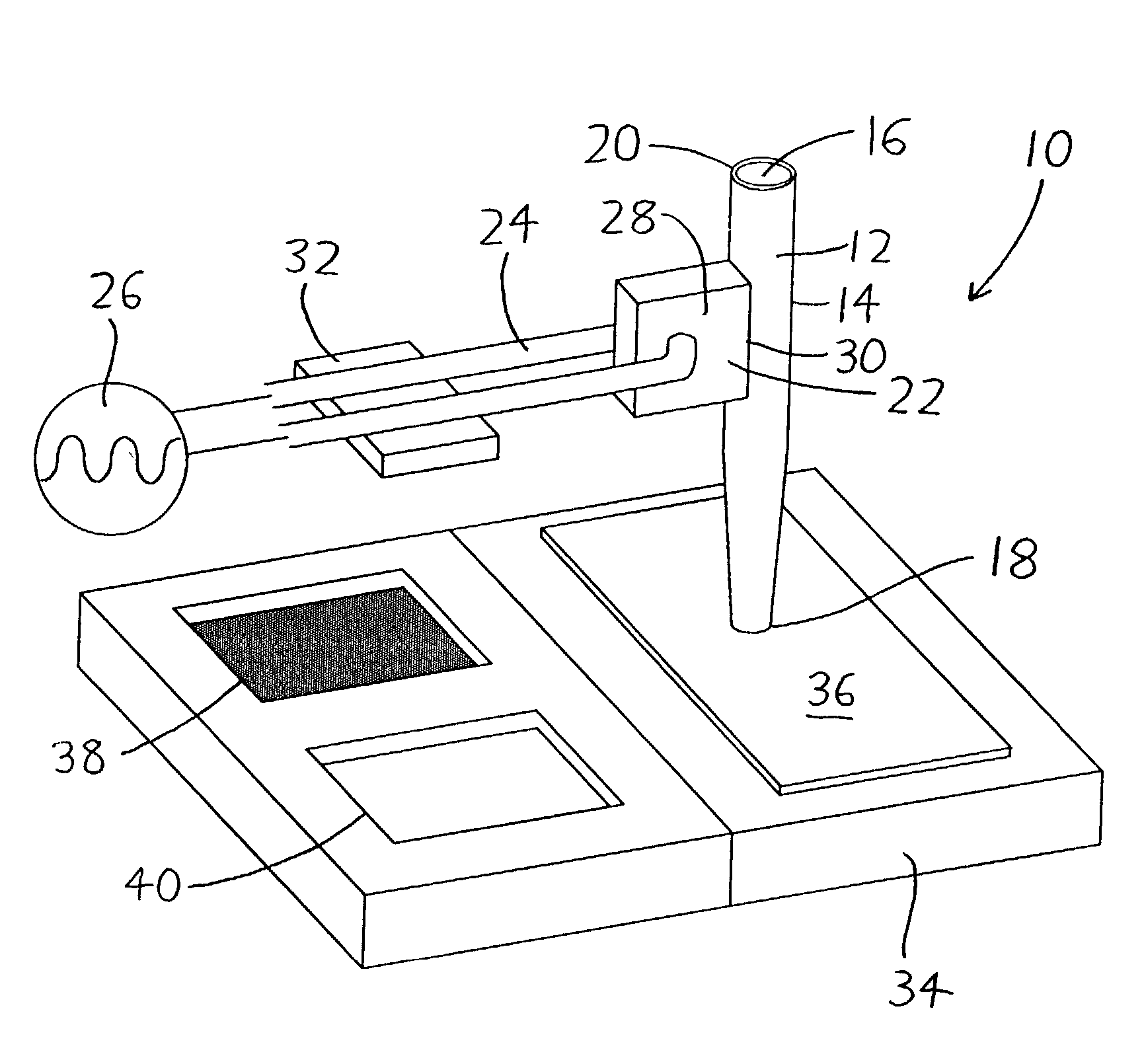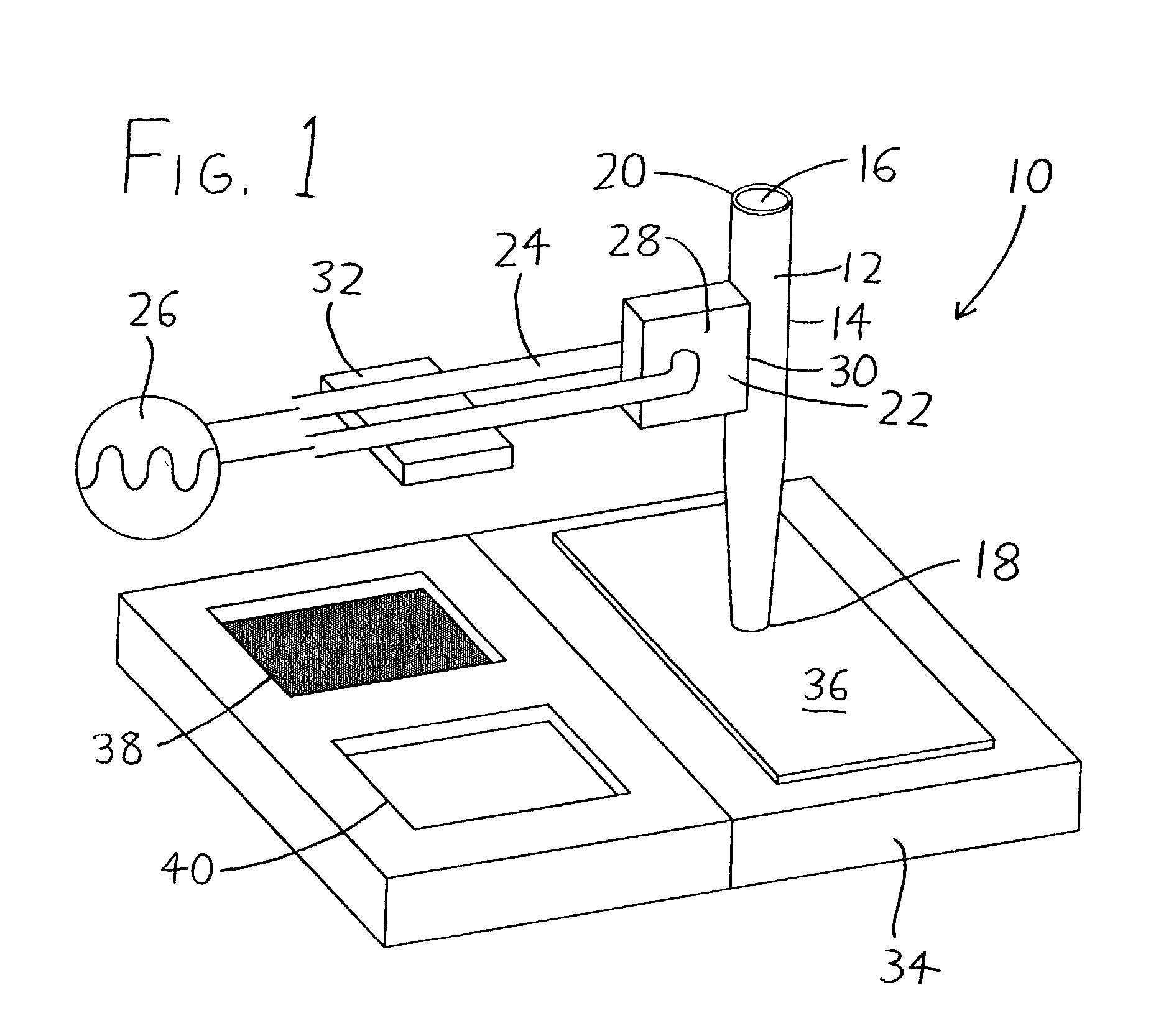Methods and apparata for precisely dispensing microvolumes of fluids
a technology of fluid microvolume and apparatus, which is applied in the field of methods and apparatus, can solve the problems of complexity, cost, and size of piezoelectric ring/tube nozzles, and achieve the effects of less construction cost, easy cost-free formation, and greater inner passage diameter
- Summary
- Abstract
- Description
- Claims
- Application Information
AI Technical Summary
Benefits of technology
Problems solved by technology
Method used
Image
Examples
Embodiment Construction
[0021] Referring to FIG. 1, an exemplary version of an apparatus for dispensing microvolumes of fluid onto a substrate is overall designated by the reference numeral 10. The apparatus 10 includes an elongated nozzle 12 bounded on its exterior by a nozzle outer surface 14, and bounded on its interior by a nozzle interior passage 16, which extends between a nozzle dispensing end 18 and an opposite end 20. The dispensing end 18 is preferably narrowed in comparison to the opposite end 20 so that the area of the interior passage 16 is smaller at the dispensing end 18 than at the opposite end 20.
[0022] While it is expected that the nozzles 12 could be formed with a variety of different materials using a number of different techniques, the dispensing nozzle 12 may be manufactured particularly inexpensively using a standard micropipette puller, which heats and elongates glass tubes to attain microcapillaries of desired sizes. Glass nozzles 12 of this nature having interior passages 16 with ...
PUM
| Property | Measurement | Unit |
|---|---|---|
| frequency | aaaaa | aaaaa |
| sizes | aaaaa | aaaaa |
| diameters | aaaaa | aaaaa |
Abstract
Description
Claims
Application Information
 Login to View More
Login to View More - R&D
- Intellectual Property
- Life Sciences
- Materials
- Tech Scout
- Unparalleled Data Quality
- Higher Quality Content
- 60% Fewer Hallucinations
Browse by: Latest US Patents, China's latest patents, Technical Efficacy Thesaurus, Application Domain, Technology Topic, Popular Technical Reports.
© 2025 PatSnap. All rights reserved.Legal|Privacy policy|Modern Slavery Act Transparency Statement|Sitemap|About US| Contact US: help@patsnap.com


